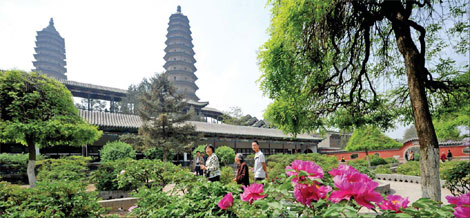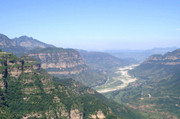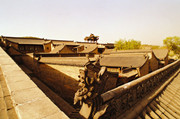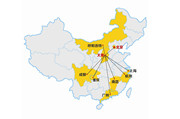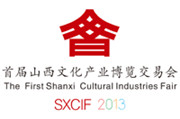Taiyuan, City of the dragon
By Yin Yin ( China Daily )
Updated: 2012-07-06
|
The site of the Twin Temples offers a great view of the city. [Provided to China Daily] |
Shanxi is rich with coal and its capital is equally as rich with the culture of the great emperors
Shanxi province is a favorite site for archeologists who have found evidence of early human settlement stretching back tens of thousands of years. The area's natural beauty must have been an attraction. A well-known folksong boasts of its "beautiful scenery, fertile land, magnificent river and abundant crops".
Taiyuan, meaning "Great Plains", is the provincial capital and was founded more than 2,500 years ago. Situated in the middle reaches of the Yellow River, it has become an industrial powerhouse and the base of China's coal industry.
Because of its northern position it was once a strategic military base but nowadays, because of its abundance of natural resources, it has been transformed into a heavily industrialized city. But amid the modernization lie ancient temples, grottoes and landmarks that point back to a time when it was called the "City of the Dragon" by the mighty Tang Dynasty (AD 618-907). Here are five top attractions to get you started.
1. Jinci Temple
If you don't visit Jinci Temple you really haven't visited Taiyuan. Located at the source of the Jin River, about 25 kilometers from the city, the temple was first built around 400AD in memory of Shu Yu, a legendary prince who lived during the Western Zhou Dynasty (c. 11th century-771 BC).
The temple grounds feature a royal garden where centuries-old cypress and pagoda trees stand lush and green.
The most famous building at Jinci Temple is the Goddess Palace, which was built in the Song Dynasty (960-1279). It is a grand structure decorated with yellow and green-glazed edges and carved animals. Colorful flowers surround its corridors. Coiling dragons wrap around the wooden pillars that hold up the front corridors.
Inside there are beautifully painted statues, and like the Terracotta warriors, each has a different body posture and facial expression.
2. Liuxiang Street
Liuxiang Street is to Taiyuan is what Wangfujing Street is to Beijing and as well as featuring heritage buildings. Shopping tourists can enjoy local dishes, especially the sliced noodles, which are a spectacle to see made. The cook goes to work with a sharp knife and noodles come out in varying length and thickness. The spices, side dishes and fresh soup are mouth watering.
Another famous noodle dish is called "Cat Ears" noodles because of its shape and the soup base is made up of tomato, peeled prawns and vegetables. This noodle dish is a real local lunch-time favorite.
Feeling like a tipple? Fen jiu, made from sorghum and is the original Chinese wine, and has been produced since the Southern and Northern Dynasties (AD 420-581).
3. Twin Pagoda Temple
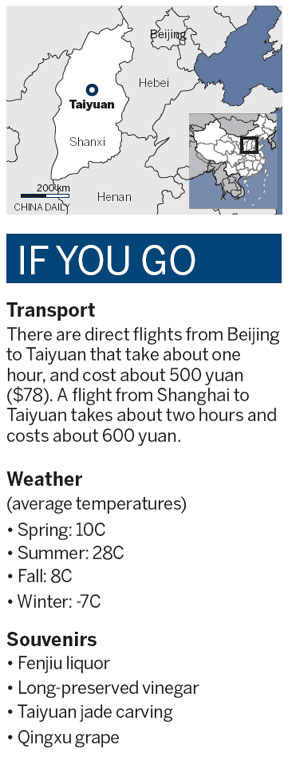
These "sister" temples demonstrate wonderfully the features of Ming Dynasty (1368-1644) architecture. And when you get to the top, what a view of the city.
Also known as Yongzuo Temple, the east pagoda was built in 1597 while the west structure was erected in 1612, during Ming times. They both have eight corners with the lowest floor being comparatively taller than the rest and rises up like a rocket. In April the peonies bloom, making it the best time to visit. These flowers were originally planted in the Ming Dynasty.
Another worthy spot here to enjoy is the stele corridor. It houses a variety of stone sculptures from the Ming Dynasty and is a great place to appreciate Chinese calligraphy.
4. Tianlong Mountain Grottoes
The grottoes are scattered among numerous pine and cypress trees that grow on Tianlong Mountain and were were built during the Eastern Wei Dynasty (AD 534-550), the Sui Dynasty (AD 581-618), and the Tang Dynasty.
There are 1,500 statues and figures created during the Tang Dynasty period, when the emperors opened their minds to Buddhism.
A shining example of Buddhist art during this time is the Bodhisattva Maitreya sculpture that has harmonious proportion and shows off an amiable and lenient smile.
The people from the Tang Dynasty worshipped the Bodhisattva Maitreya, regarding him as the symbol of a bright future.
The Kwan-yin sculpture is equally impressive with her charming countenance.
5. Chongshan Monastery
Chongshan means "appreciating kindness" and this Tang Dynasty monastery was built as a retreat for the emperor.
Now it is a Buddhist temple and a key cultural relic. Covering an area of 140,000 sq m, the Chongshan Monastery is a standout in Taiyuan. However, during the period of Emperor Tongzhi of the Qing Dynasty (1644-1911), the monastery was almost reduced to ashes.
Today only a small portion of the complex has survived. Chongshan Monastery is famous for the original sutras of the Song, Ming and Qing dynasties.
The central statue of Kwan-yin is located in the Dabei Hall, the main hall, and has 1,000 hands and eyes and stands 8.5 meters tall.
The three gilded Ming Dynasty mud statues of Bodhisattvas are about 8 meters high and still retain their color and smoothness.
Gem paintings are among the treasures in Chongshan Monastery, and copies of two frescos still retain their bright colors.
